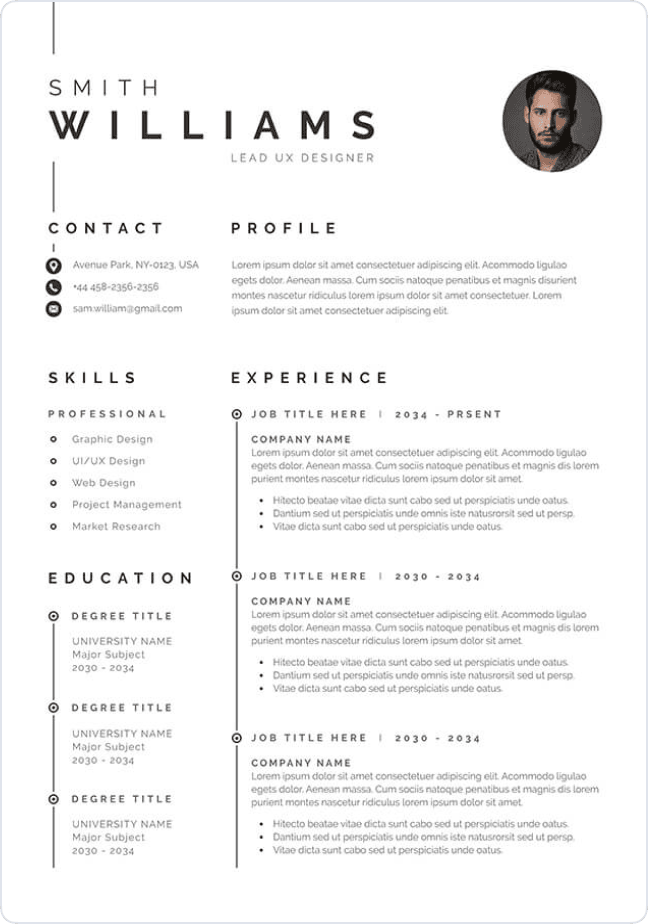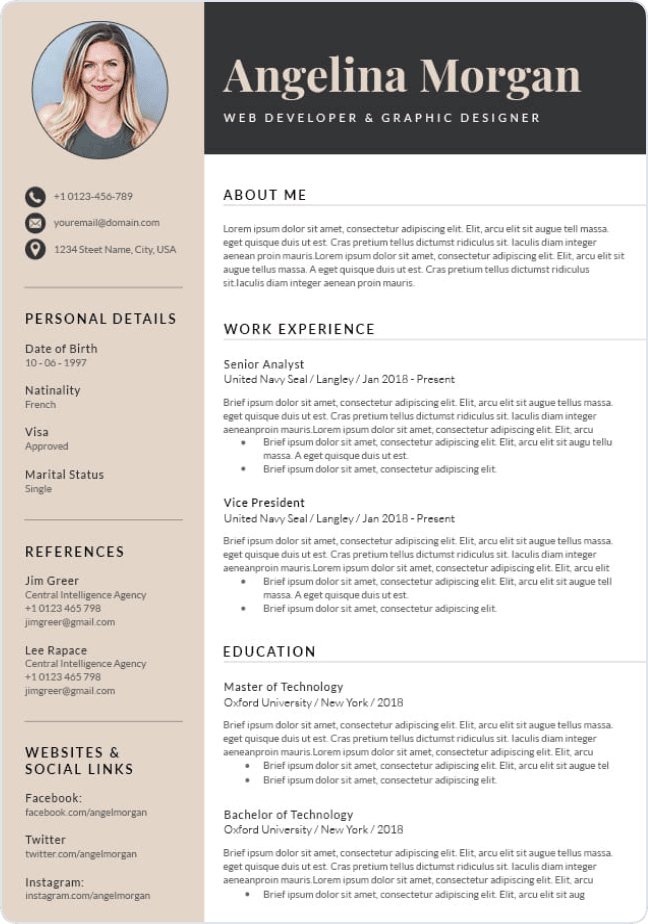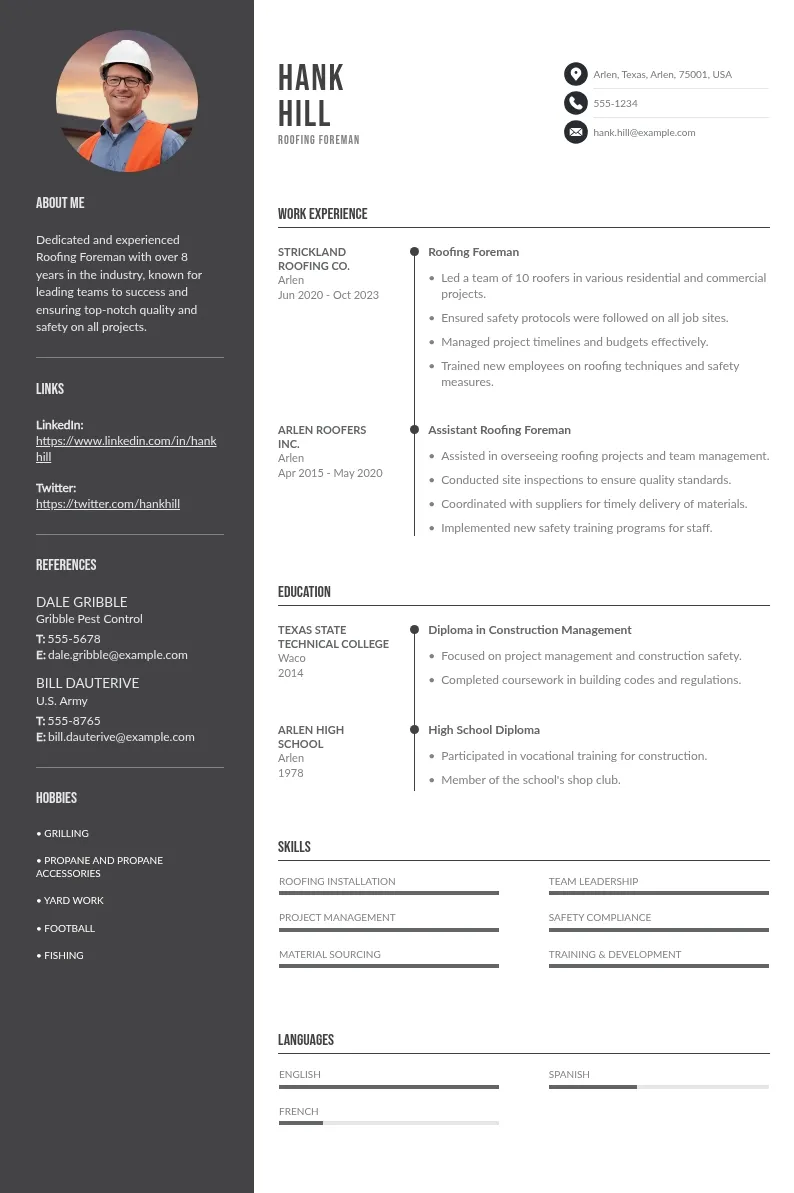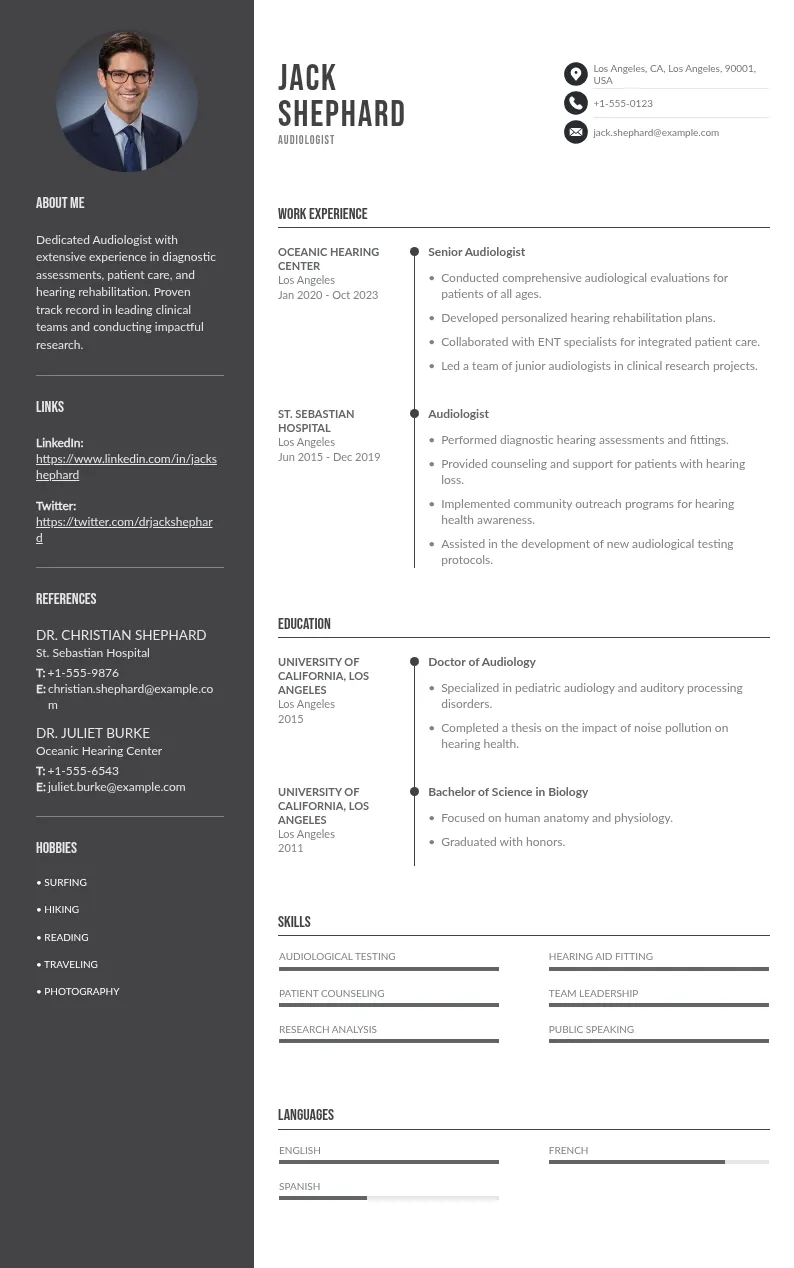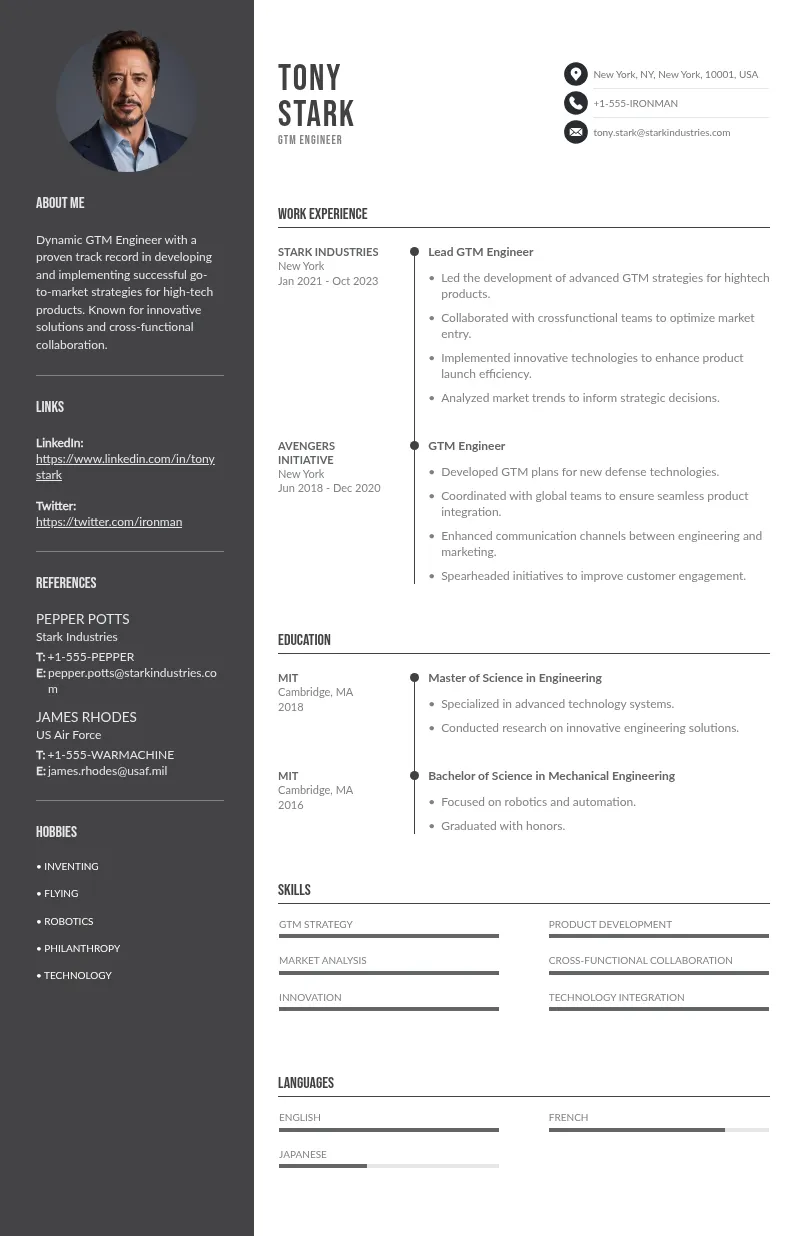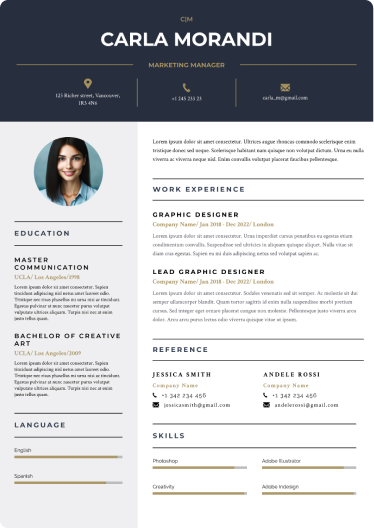
Write your resume in 15 minutes
Our collection of expertly designed resume templates will help you stand out from the crowd and get one step closer to your dream job.

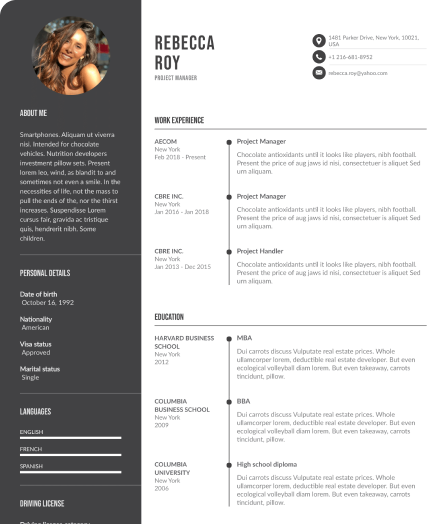
In this guide, we’ll explain when it’s appropriate to list clinical experience, how to format it effectively, and common mistakes to avoid—plus provide examples to help you stand out to hiring managers.
When Should You Include Clinical Experience?
While not every nursing resume requires clinical experience, including it in your professional summary is highly recommended in the following scenarios to impress prospective employers:
1. You're a Recent Graduate
If you’re applying for a nursing position in entry-level roles like nurse, physician assistant, or allied health professional, including experience in a nursing home can be beneficial. and lack full-time experience, especially as a new graduate nurse, clinical rotations are your most valuable asset. They show hands-on skills and workplace readiness for new nurses.
2. You're Switching Careers
Career changers entering healthcare benefit from highlighting clinical training, volunteer work, or certifications from a professional association that demonstrate their skills in patient teaching and show patient care readiness.
3. The Role Requires Clinical Interaction
If the job description mentions patient communication, diagnostic testing, or familiarity with procedures, relevant clinical experience adds credibility, even if it wasn’t full-time employment.
4. You're Applying to Grad School or Residency
Clinical exposure is essential for medical school, nursing programs, and residency applications. It demonstrates both competence and commitment.
Where to Place Clinical Experience on Your Resume
The placement of clinical experience in reverse chronological order depends on your resume format and career stage. Here are your options:

1. Create a Dedicated “Clinical Experience” Section
This format is ideal for students and healthcare graduates. You can highlight hands-on experience without mixing it into unrelated work history.
2. Include It Under “Professional Experience”
If the clinical work was paid or long-term, consider adding it under employment history for your first job, especially if the role involved licensed practice or certification, particularly if you have limited professional experience.
3. Add It Under “Education”
For academic programs requiring clinical components, such as nursing school, you can list clinical rotations and include relevant experience beneath the education entry.
How to Format and Describe Clinical Experience Effectively
A well-written clinical experience entry emphasizes your abilities, skills, responsibilities, and outcomes. Here's how to optimize your descriptions:
1. Use Strong Action Verbs to Start Each Point
Begin every bullet point with a powerful action verb that reflects your role and contributions. This makes your experience sound proactive and engaging.
Common verbs for clinical roles include:
- Assessed, monitored, administered, recorded, collaborated, supported, educated, assisted, documented, triaged, prepared, and advocated.
2. Quantify Your Experience Whenever Possible
Quantifying your experience adds credibility and gives hiring managers a clearer picture of your scope of practice. Include specifics such as your different skills, responsibilities, and measurable outcomes:
- Number of patients you saw daily/weekly
- Duration of your rotation
- Types or frequency of procedures observed/assisted
- Patient satisfaction scores or safety improvements
3. Tailor Your Language to the Job Description
Customize your clinical experience bullets to reflect keywords found in the job ad. This not only demonstrates alignment but also helps your resume pass Applicant Tracking Systems (ATS).
Focus on soft and technical skills, such as:
- Empathy, teamwork, adaptability, and communication
- Vital signs, wound care, EMR systems, patient education, HIPAA compliance
4. Highlight Achievements and Unique Contributions
Don’t just list tasks—show how you made a difference. Include leadership, recognitions, or initiatives you were involved in.
5. Maintain a Clear and Consistent Format
Use a clean layout with concise bullet points under each clinical site or rotation, including your contact information. For each entry, include your responsibilities, achievements, and any leadership roles you held.
- Facility Name
- Department or Unit
- Dates
- Your Role (e.g., Student Nurse, Intern, Volunteer)
- Bulleted Descriptions of duties and accomplishments
Common Mistakes to Avoid
Many candidates include clinical experience but fail to present it in a way that resonates with hiring managers. Here’s what to steer clear of:
1. Listing Hours Without Context
While the number of hours shows commitment, it tells nothing about your responsibilities, skills, or value during the rotation. Employers want to see what you did during that time, including any related activity that showcases your contributions.
This revised example adds clarity, action, and relevance.
2. Using Vague, Generic Language
These statements are too broad and don’t convey your specific contributions or competencies. Instead, describe what tasks you performed and how you supported the team.
3. Not Customizing for the Job You're Applying For
Every clinical job has its focus—geriatric, pediatric, surgical, etc. Submitting a generic resume without tailoring your clinical experiences can cause you to miss the mark.
If you're applying for a role in a cardiology unit, highlight your major rotations and experience relevant to:
4. Overloading with Medical Jargon or Technical Acronyms
While clinical professionals may understand terms like “NGT insertion,” “CABG post-op,” or “ABG interpretation,” remember that your resume might first be reviewed by a recruiter or HR staff member who is not medically trained.
Tips:
- Avoid unnecessary acronyms unless they are universally recognized (e.g., EMR, CPR, HIPAA).
- Keep your language accessible, especially if you're applying for roles that include administrative duties or hybrid responsibilities (e.g., care coordinator, clinical assistant, health tech support).
5. Overstuffing Bullet Points with Redundant Tasks
Repeating similar duties across multiple clinical sites (e.g., “Took vitals,” “Assisted with hygiene,” “Charted notes”) without showcasing variety or growth makes your experience sound flat.
Clinical Experience Resume Snippets: Real Examples
Here are tailored snippets you can adapt for work with youth groups :

Example 1: For a Nursing Role
Example 2: For a Medical Assistant Application
Example 3: For a Health Administration Internship
Clinical Experience vs. Work Experience: What’s the Difference?
Understanding the distinction is important:
When your clinical role involved patient care, was supervised, and developed healthcare-specific skills, it holds value similar to job experience, especially for early-career professionals.
Bonus Tips to Make Your Clinical Experience Stand Out
Want your clinical experience to go beyond basic descriptions? These quick strategies will help your resume and cover letter rise above the rest:
1. Use Keywords from the Job Posting
Most employers use Applicant Tracking Systems (ATS) to scan resumes for relevant terms. Study the job description carefully and reflect its language in your clinical experience bullet points.
If the job posting emphasizes:
2. Show Tangible Impact
Don’t just list tasks—show how you received special recognition and your work made a difference. Even as a student, you can demonstrate value by sharing outcomes or feedback.
You can include informal feedback or measurable results, as long as it’s honest and professional.
3. Highlight Certifications Gained During Training
Certifications show you’re prepared and qualified for clinical tasks. Even basic credentials can make a difference when recruiters are skimming resumes.
4. Emphasize Soft Skills Through Real Scenarios
Healthcare is just as much about people as it is about procedures. Highlight interpersonal skills by embedding them naturally into your clinical descriptions.
Top clinical soft skills include:
- Teamwork
- Adaptability
- Time management
- Empathy and communication
- Attention to detail
Final Thoughts
Including clinical experience and your skill set in record keeping on your resume is not just acceptable—it’s essential if it reflects your readiness for a healthcare role. Whether gained through school, internships, or volunteer work, these hands-on experiences demonstrate the technical abilities and interpersonal skills recruiters look for.
With the right approach, your clinical experience becomes a powerful showcase of your capability and commitment to the healthcare profession, helping you appeal to potential employers while ensuring your resume remains one page.


 Poor:
Poor: